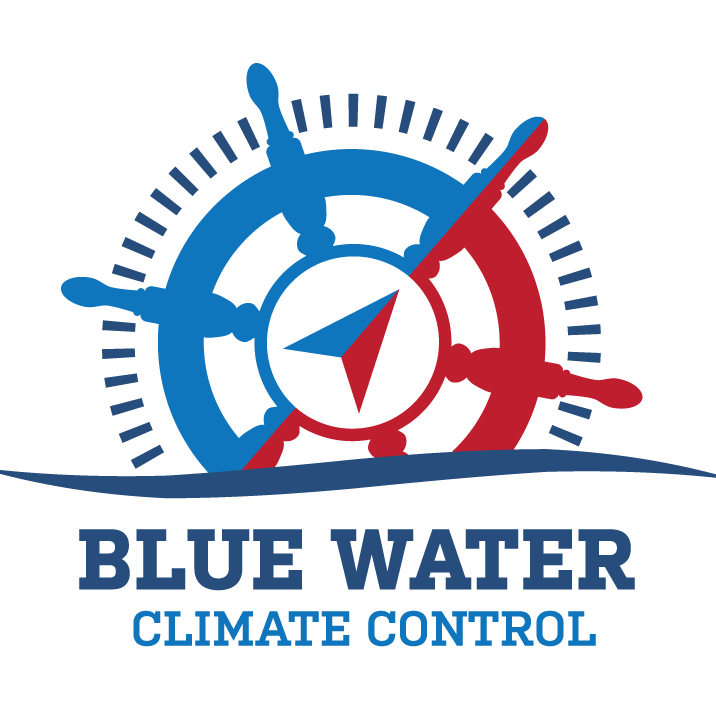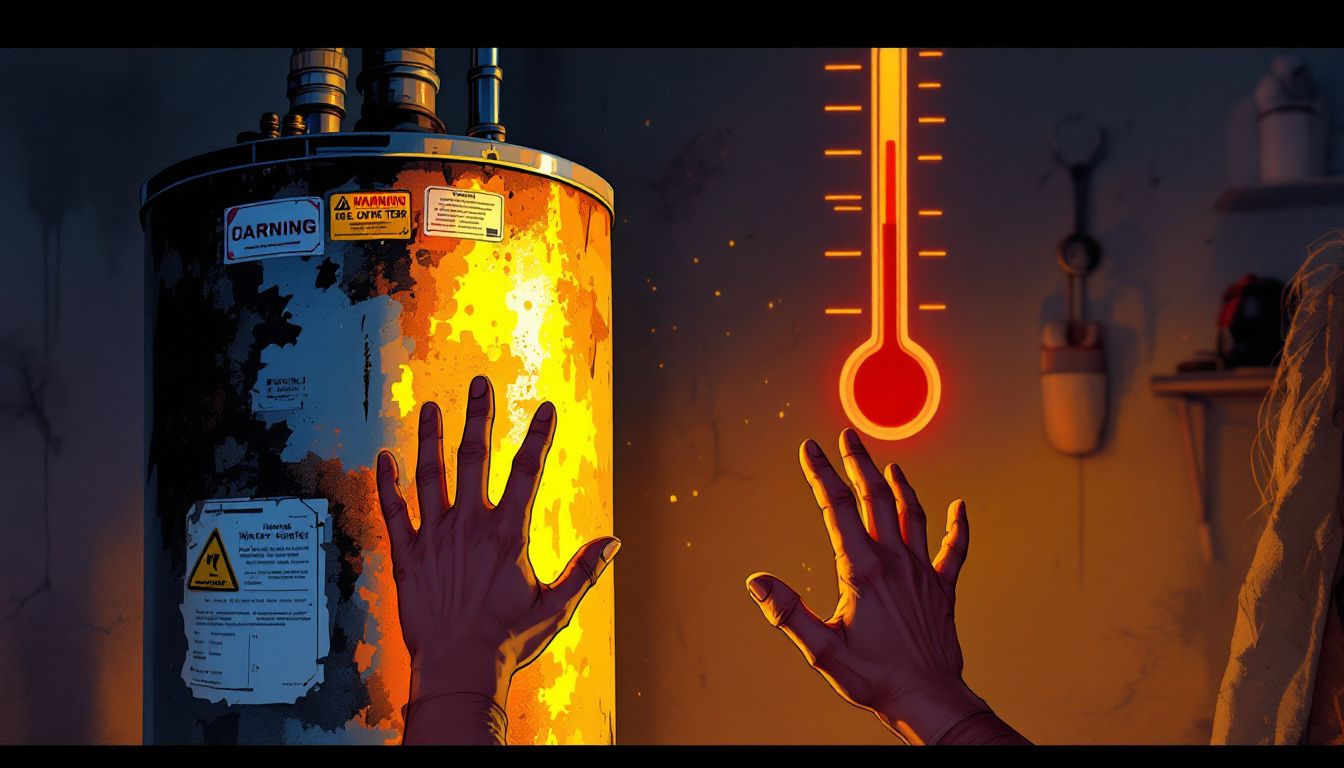Dangers of Tankless Water Heaters: What You Need to Know
Are tankless water heaters safe? While they provide endless hot water and save energy, they have risks like improper sizing, venting issues, and mineral buildup. This article will help you understand the dangers of tankless water heaters and how to manage them.
Key Takeaways
Correct sizing and professional installation of tankless water heaters are vital to ensure optimal performance and avoid issues like inadequate hot water supply.
Regular maintenance, including inspections for venting, gas supply, and electrical issues, is essential to prevent safety risks and enhance efficiency.
Understanding common problems such as fluctuating water temperatures and the cold water sandwich effect can help users manage their hot water needs effectively.
Quick Links:
Improper Sizing and Capacity Issues
One of the most critical aspects of installing a tankless water heater is selecting the correct size for your home. The flow rate capacity, measured in Gallons Per Minute (GPM), is a key metric that determines how well the unit can meet your hot water demands. If the unit is undersized, it will struggle to provide sufficient hot water during peak usage times, leaving you with cold showers and frustrated family members. On the other hand, an oversized unit may not operate efficiently, leading to unnecessary costs and wasted energy.
Avoid these issues by hiring a professional plumber from a water heater company who can accurately assess your home’s hot water needs and ensure proper selection and installation of the tankless water heater. Professionals can also advise on whether multiple units might be necessary to handle high hot water demands, ensuring that you never run out of hot water, even when several appliances are in use simultaneously. Consider utilizing tankless water heater services for optimal performance.
Exceeding the flow rate capacity of your tankless water heater can result in performance issues, as the unit will not be able to heat the water effectively. This can be particularly problematic in large households or during times of high demand, such as when the dishwasher and washing machine are running simultaneously.
Proper sizing and professional tankless water heater installation are key to avoiding these capacity issues and ensuring your tankless water heater performs optimally.
Venting and Exhaust Problems
Proper venting and exhaust systems are essential for the safe and effective operation of tankless water heaters. These units must comply with specific code requirements to ensure that combustion byproducts are safely expelled from your home. Improper venting can lead to a buildup of dangerous gases, such as carbon monoxide, which poses serious health risks.
Inspecting the exhaust flue regularly ensures it is free of blockages, which can prevent proper combustion air supply and operational issues. Blockages can cause the heating system to overheat and potentially damage the heat exchanger.
Selecting the appropriate exhaust pipe diameter prevents improper venting and the accumulation of harmful gases.
Fluctuating Water Temperatures
One of the most common complaints about tankless water heaters is fluctuating water temperatures. This issue can arise from several factors, including low water flow rates, undersized units, or faulty temperature sensors. When a tankless water heater is undersized, it struggles to keep up with the demand for hot water, leading to temperature fluctuations that can be quite frustrating.
Using multiple hot water appliances simultaneously, such as taking a shower while the dishwasher is running, can also cause the water temperature to fluctuate. Tankless heaters may have difficulty achieving lukewarm temperatures due to minimum water flow requirements, making it challenging to deliver hot water consistently and enjoy endless hot water. To ensure optimal performance, it is essential to heat water effectively.
Understanding these limitations can help you manage your hot water usage and avoid unpleasant surprises.
Mineral Buildup and Scaling
Mineral buildup and scaling are significant concerns for tankless water heaters, especially in areas with hard water. The presence of dissolved minerals like calcium and magnesium can lead to deposits forming inside the heat exchanger, reducing the unit’s efficiency and potentially causing costly repairs. Regular maintenance is crucial to prevent mineral buildup and ensure the heater operates efficiently.
Flushing the water heater regularly with vinegar can help prevent debris buildup. Additionally, using a water softener can mitigate the effects of hard water and prolong the life of your tankless water heater.
Annual maintenance plans are essential to keep the system running smoothly and to avoid the negative impacts of mineral scaling.
Ignition Failures
Ignition failures are another common issue with tankless water heaters, often stemming from gas supply problems or dirty igniters. Error codes on tankless water heaters can help diagnose these problems, with specific codes indicating issues such as no ignition or gas supply problems. Rheem, Rinnai, and Bosch all have fault code 11, indicating no ignition and suggesting a check of the gas supply and igniter functionality.
Prevent ignition failures with regular maintenance and inspection of the gas supply and igniter. Ensuring other gas appliances are functioning correctly can also help diagnose and resolve gas supply issues. Keeping the igniters clean and the gas lines free of blockages will help maintain the reliable operation of your tankless water heater.
Overheating Risks
Overheating is a serious risk for tankless water heaters, often caused by improper installation, insufficient water flow, or component failures. Incorrect thermostat settings can also lead to overheating if the temperature adjustments are set too high. Malfunctions or restrictions in the inlet or outlet valves can result in insufficient water flow, causing the heater to overheat.
Inadequate airflow or venting can trigger overheating by preventing proper combustion and exhaust of flue gases. A cracked heat exchanger poses a double threat, as it can lead to overheating issues and carbon monoxide leakage.
Mitigate these risks with regular maintenance and proper installation to ensure the safe operation of your tankless water heater.
Gas Supply Challenges
Gas supply challenges can significantly impact the performance of tankless water heaters. Low propane levels, small gas lines, or faulty regulators can result in flame failure during operation. Debris or sediments in the gas line can obstruct gas flow, leading to ignition problems. Tankless water heaters work need significantly more gas than traditional tank units. Specifically, they require access to at least four times the gas amount.
Regular inspections of the gas line can help identify and resolve gas supply issues before they affect the heater’s efficiency. Ensuring that other gas appliances are functioning correctly can also aid in diagnosing potential problems. Proper gas supply management is essential for the reliable operation of your tankless water heater.
Electrical Issues and Circuit Breaker Tripping
Electrical issues, such as wiring problems, can disrupt the operation of tankless water heaters. Circuit overloads happen when several high-power appliances draw too much current at the same time. This excessive demand can lead to the tripping of the circuit breaker. Frequent tripping of a circuit breaker often indicates overloading or a faulty breaker that needs to be replaced.
Regular electrical inspections prevent these issues and ensure the safe operation of your tankless water heater. Addressing wiring problems and ensuring the electrical system can handle the load are key steps in maintaining reliable performance.
Control Board and Sensor Malfunctions
Control board and sensor malfunctions can lead to significant issues with tankless water heaters. Malfunctioning temperature sensors may fail to accurately gauge water temperature, leading to overheating or inadequate heating. Faulty flow sensors can also result in inaccuracies in temperature regulation.
Control boards can fail due to manufacturing defects or exposure to environmental factors, such as power surges. Professional technicians are equipped to handle diagnostics and repairs related to control boards and sensors, ensuring the efficient operation of your tankless water heater.
Cold Water Sandwich Effect
The cold water sandwich effect is a common issue with tankless water heaters, characterized by an initial surge of hot water followed by a burst of cold water before turning hot again. This phenomenon is caused by a short delay between water flow and heater activation. Using multiple fixtures simultaneously can exacerbate the effect, causing delays in heating water.
Installing a mini storage tank or a recirculating system can help alleviate the cold water sandwich effect by providing a reserve of heated water and maintaining hot water in the pipes. Choosing a tankless system equipped with a delayed shut-off feature can also enhance consistent hot water delivery.
Power Outages
Power outages can significantly impact the operation of tankless water heaters, as they rely on an electric control panel to function. During a power outage, both electric and gas-powered tankless water heaters lose access to hot water. Additionally, power surges can damage the electronic components of the heater, leading to operational issues.
Using a battery backup generator can help maintain access to hot water during power outages. Test the battery backup system regularly to ensure it functions correctly during emergencies.
Proper power management techniques, such as turning off non-essential devices, can also extend the life of the battery during outages.
Professional Installation and Maintenance
Professional installation is essential for tankless water heaters due to the complexities of the system. Many plumbers lack experience with tankless systems, highlighting the importance of choosing a qualified technician who can provide knowledgeable care. Annual maintenance and system flushing are necessary to maintain the efficiency of tankless water heaters.
A properly maintained battery backup system can prevent performance issues and prolong the lifespan of the tankless water heater. Installing a battery backup solution enhances safety by preventing issues like frozen pipes during winter outages. Regular testing and proper power management are key to ensuring uninterrupted operation of the tankless water heater during power outages.
Summary
In summary, while tankless water heaters offer several advantages, they also come with potential risks that homeowners must be aware of. Proper sizing, professional installation, and regular maintenance are crucial to ensuring the efficient and safe operation of these systems. Addressing issues such as venting problems, fluctuating temperatures, mineral buildup, and ignition failures can help prevent costly repairs and ensure a reliable supply of hot water.
By taking the necessary precautions and staying informed about the potential dangers, homeowners can enjoy the benefits of tankless water heaters without compromising safety or efficiency. Investing in professional help and regular maintenance will go a long way in ensuring the longevity and performance of your tankless water heater.
Frequently Asked Questions
What is the most common cause of fluctuating water temperatures in tankless water heaters?
The most common cause of fluctuating water temperatures in tankless water heaters is undersized units or low water flow rates. Ensuring your unit is properly sized and that flow rates are adequate can help maintain consistent temperatures.
How can I prevent mineral buildup in my tankless water heater?
To prevent mineral buildup in your tankless water heater, perform regular maintenance by flushing the system with vinegar and using a water softener. This will help prolong the life of your unit.
What should I do if my tankless water heater experiences ignition failures?
If your tankless water heater has ignition failures, first check the gas supply and the igniter for proper functionality, and consult the manufacturer's error codes for diagnostics. Regular maintenance and inspection are essential to avoid such issues in the future.
How can I mitigate the cold water sandwich effect?
To mitigate the cold water sandwich effect, consider installing a mini storage tank or a recirculating system, which will help ensure a steady supply of hot water. This will enhance your overall comfort and efficiency.
Why is professional installation important for tankless water heaters?
Professional installation is crucial for tankless water heaters as it guarantees proper sizing and venting, thereby preventing potential issues and ensuring optimal efficiency. This attention to detail enhances the performance and longevity of the system.






